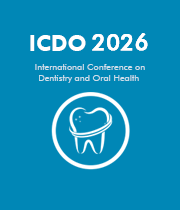Title: Appliance selection in rapid palatal expansion: A maturation based overview
Abstract:
Introduction: Transverse maxillary deficiency is a common orthodontic problem associated with posterior crossbite, crowding, and narrow nasal airways. Rapid palatal expansion (RPE) is a well-established orthopaedic method to correct maxillary constriction. However, the success of expansion critically depends on the maturation stage of the midpalatal suture. Advances in imaging and appliance design have led to diversified RPE modalities suited for different age groups and skeletal conditions.
Purpose: To present a structured overview of current RPE appliances adapted to the ossification stage of the midpalatal suture, and to guide clinical decision-making through comparative analysis of conventional RPE, 3D-printed designs, MARPE, and SARPE.
Materials and Methods: The data presented are synthesized from an extensive review of contemporary scientific literature, CBCT-based classifications of suture maturation, and recent clinical trials comparing RPE outcomes. A clinical algorithm is proposed based on age, skeletal maturity, and imaging. Clinical cases are included to illustrate key principles.
Results: Selection of RPE modality must reflect midpalatal suture maturity, skeletal architecture, and periodontal capacity. A stratified framework supports biologically consonant planning:
• Children with open sutures predictably respond to tooth-borne expanders (Hyrax, Haas), achieving orthopedic correction during early and mixed dentition.
• Adolescents at or post pubertal peak are best suited for MARPE, where hybrid anchorage secures controlled skeletal expansion in partially ossified sutures with reduced dentoalveolar burden.
• Young adults up to 35, particularly with limited posterior anchorage or periodontal compromise, require bone-anchored maxillary expanders (BAME) for fully skeletal load transfer.
• Adults with complete suture fusion necessitate SARPE to achieve transverse correction in mature skeletal states.
Across all stages, digitally designed, 3D-printed expanders optimize appliance geometry, vector control, and individual fit. Additive manufacturing enhances procedural efficiency, improves patient tolerance, and supports integration within interdisciplinary workflows.
Conclusion: Rapid palatal expansion is no longer a singular mechanical event but a maturationally guided orthopedic strategy. CBCT-assisted staging and biomechanical reasoning empower clinicians to replace generalized protocols with predictive, individualized intervention.The transition from tooth-borne systems to skeletally anchored, digitally optimized protocols – supported by 3D printing, algorithmic modality selection, and interdisciplinary planning – marks a paradigm shift in managing transverse discrepancies. A biologically consonant, digitally empowered framework now underpins the modern RPE landscape: adaptive, evidence-driven, and clinically resilient.




